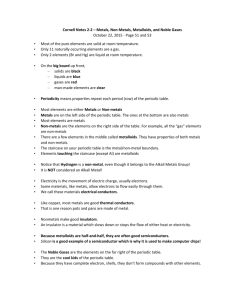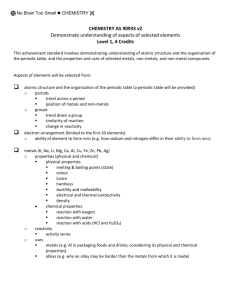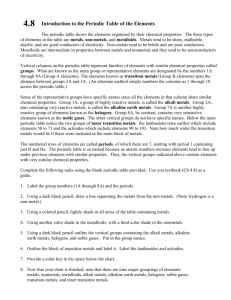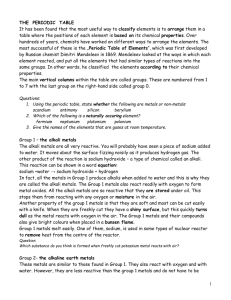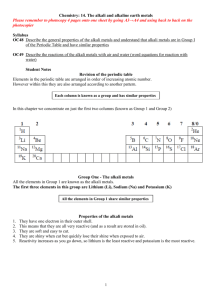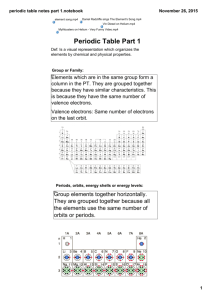FACT AND FABLE IN THE STORY OF THE TABLE
advertisement
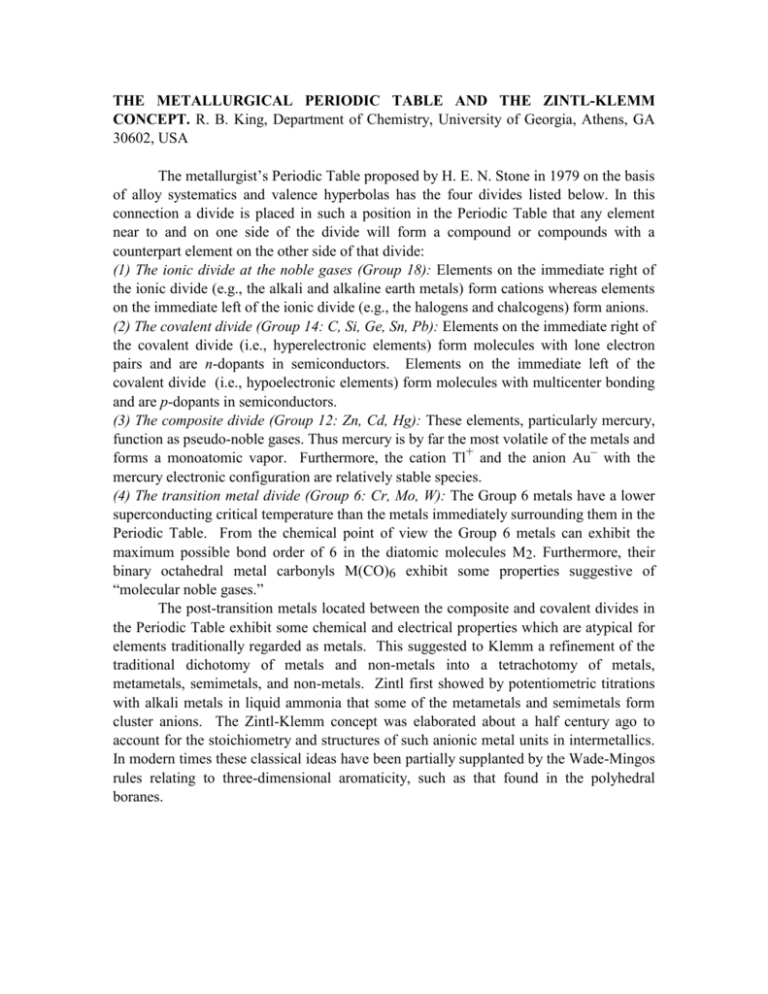
THE METALLURGICAL PERIODIC TABLE AND THE ZINTL-KLEMM CONCEPT. R. B. King, Department of Chemistry, University of Georgia, Athens, GA 30602, USA The metallurgist’s Periodic Table proposed by H. E. N. Stone in 1979 on the basis of alloy systematics and valence hyperbolas has the four divides listed below. In this connection a divide is placed in such a position in the Periodic Table that any element near to and on one side of the divide will form a compound or compounds with a counterpart element on the other side of that divide: (1) The ionic divide at the noble gases (Group 18): Elements on the immediate right of the ionic divide (e.g., the alkali and alkaline earth metals) form cations whereas elements on the immediate left of the ionic divide (e.g., the halogens and chalcogens) form anions. (2) The covalent divide (Group 14: C, Si, Ge, Sn, Pb): Elements on the immediate right of the covalent divide (i.e., hyperelectronic elements) form molecules with lone electron pairs and are n-dopants in semiconductors. Elements on the immediate left of the covalent divide (i.e., hypoelectronic elements) form molecules with multicenter bonding and are p-dopants in semiconductors. (3) The composite divide (Group 12: Zn, Cd, Hg): These elements, particularly mercury, function as pseudo-noble gases. Thus mercury is by far the most volatile of the metals and forms a monoatomic vapor. Furthermore, the cation Tl+ and the anion Au– with the mercury electronic configuration are relatively stable species. (4) The transition metal divide (Group 6: Cr, Mo, W): The Group 6 metals have a lower superconducting critical temperature than the metals immediately surrounding them in the Periodic Table. From the chemical point of view the Group 6 metals can exhibit the maximum possible bond order of 6 in the diatomic molecules M2. Furthermore, their binary octahedral metal carbonyls M(CO)6 exhibit some properties suggestive of “molecular noble gases.” The post-transition metals located between the composite and covalent divides in the Periodic Table exhibit some chemical and electrical properties which are atypical for elements traditionally regarded as metals. This suggested to Klemm a refinement of the traditional dichotomy of metals and non-metals into a tetrachotomy of metals, metametals, semimetals, and non-metals. Zintl first showed by potentiometric titrations with alkali metals in liquid ammonia that some of the metametals and semimetals form cluster anions. The Zintl-Klemm concept was elaborated about a half century ago to account for the stoichiometry and structures of such anionic metal units in intermetallics. In modern times these classical ideas have been partially supplanted by the Wade-Mingos rules relating to three-dimensional aromaticity, such as that found in the polyhedral boranes.
